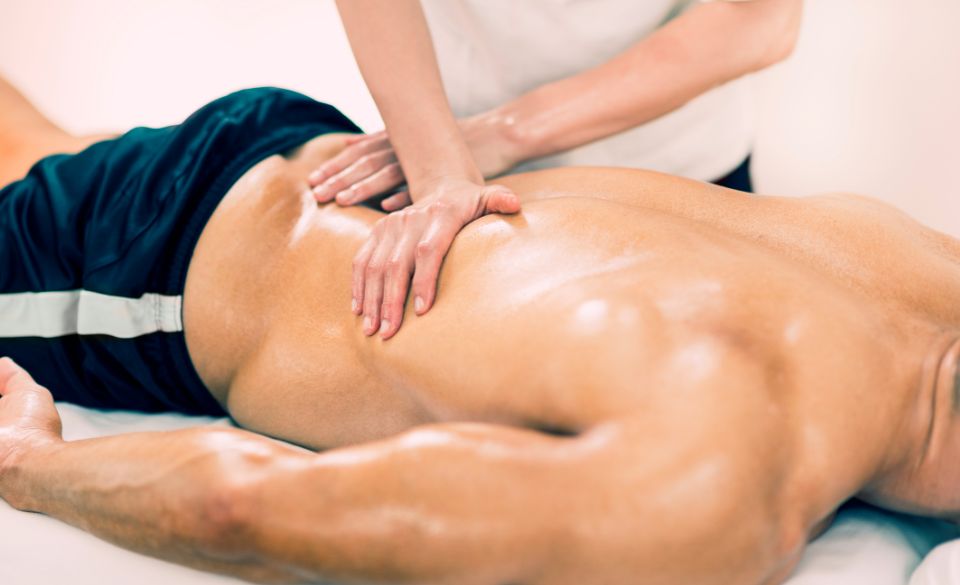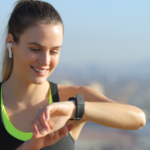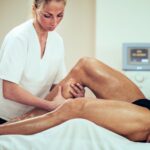
How Massage Can Boost Recovery for Runners
Page Contents
- Kneading Away Soreness: The Science of Muscle Relaxation
- Unraveling Muscle Knots: The Magic of Myofascial Release
- Stress-Busting Bliss: Cortisol Reduction through Massage
- Enhancing Athletic Performance: A Holistic Approach to Recovery
- Making Massage a Staple in Your Running Routine: Practical Tips and Considerations
- Conclusion: Elevate Your Recovery Game with the Power of Massage
If you’re a passionate runner, you know the exhilaration of conquering new distances and pushing your limits. However, with great effort comes the inevitable wear and tear on your muscles and joints. That’s where the magic of massage comes into play. Beyond being a luxurious indulgence, massage therapy can be a powerful tool in your recovery arsenal. Let’s delve into the captivating world of how massage can elevate your post-run recovery game.
Kneading Away Soreness: The Science of Muscle Relaxation
Picture this: you’ve just completed a challenging long run, and your muscles are crying out for relief. Enter massage therapy – a science-backed solution for alleviating post-workout soreness. A study published in the Journal of Athletic Training revealed that massage can significantly reduce muscle soreness after intense exercise. The rhythmic pressure applied during a massage session helps increase blood flow to fatigued muscles, flushing out toxins and promoting the delivery of essential nutrients. This enhanced circulation not only speeds up the healing process but also leaves your muscles feeling rejuvenated and ready for your next run.
Unraveling Muscle Knots: The Magic of Myofascial Release
You know those stubborn knots that seem to take up residence in your muscles, causing discomfort and limiting your range of motion? That’s where myofascial release, a key technique in massage therapy, comes to the rescue. Fascia, the connective tissue that envelops your muscles, can become tight and restricted due to overuse or improper form. Myofascial release involves applying sustained pressure to these areas, allowing the fascia to relax and release its grip on your muscles. According to a study published in the Journal of Bodywork and Movement Therapies, myofascial release has been shown to improve flexibility and reduce muscle pain, making it a game-changer for runners seeking optimal recovery.
Stress-Busting Bliss: Cortisol Reduction through Massage
While running is an excellent stress-reliever, the physical stress your body undergoes during intense workouts can lead to elevated levels of cortisol, commonly known as the stress hormone. Enter massage therapy, your cortisol-fighting ally. Research published in the International Journal of Neuroscience suggests that massage can lead to a significant decrease in cortisol levels. As the soothing strokes of a massage therapist’s hands work their magic, your body enters a state of relaxation, triggering a cascade of hormonal responses that counteract the effects of stress. This reduction in cortisol not only enhances your recovery process but also contributes to an overall sense of well-being.
Enhancing Athletic Performance: A Holistic Approach to Recovery
Beyond the immediate benefits of relaxation and pain relief, massage therapy offers a holistic approach to enhancing your athletic performance. A study conducted by the Journal of Sports Science and Medicine found that regular massage sessions can improve range of motion, increase muscle flexibility, and enhance overall athletic performance. By incorporating massage into your post-run routine, you’re not just recovering from your current workout – you’re also setting the stage for improved performance in future runs. It’s a proactive investment in your body’s longevity and your journey as a dedicated runner.
Making Massage a Staple in Your Running Routine: Practical Tips and Considerations
Now that we’ve explored the incredible benefits of massage for runners, let’s dive into the nitty-gritty of how to make massage an integral part of your training regimen. Incorporating regular massage sessions into your routine doesn’t have to be complicated; with a few practical tips and considerations, you’ll be well on your way to reaping the rewards of this recovery-enhancing practice.
1. Schedule Strategically: When it comes to maximizing the benefits of massage, timing is key. Aim to schedule your massage sessions strategically, ideally within 48 hours after a challenging run or workout. This window of opportunity allows you to capitalize on the increased blood flow and circulation, aiding in muscle repair and minimizing soreness.
2. Communicate with Your Therapist: Effective communication with your massage therapist is crucial. Before your session, discuss your running routine, specific areas of discomfort, and any lingering injuries. A skilled therapist will tailor their techniques to address your unique needs, ensuring that you receive a personalized and effective session.
3. Hydrate and Rest: In the days leading up to your massage, prioritize hydration and rest. Well-hydrated muscles respond more favorably to massage, and adequate rest helps your body fully absorb the benefits of the therapy. Hydration supports the flushing of toxins from your muscles, while rest provides the optimal environment for tissue repair.
4. Combine with Other Recovery Strategies: While massage is a potent recovery tool, it’s even more effective when combined with other strategies. Consider integrating foam rolling, stretching, and active recovery exercises into your routine. This comprehensive approach can enhance muscle relaxation, improve flexibility, and expedite your recovery process.
5. Consistency is Key: Like any aspect of your training, consistency yields the best results. Make massage a regular part of your routine, whether it’s weekly, bi-weekly, or monthly. Consistent sessions will help prevent the accumulation of muscle tension and ensure that you continuously reap the rewards of reduced soreness and improved performance.
6. DIY Techniques: While professional massage sessions are invaluable, you can also incorporate DIY techniques into your routine. Foam rolling, self-myofascial release with massage balls, and gentle self-massage can provide on-the-spot relief between professional sessions.
7. Listen to Your Body: Lastly, always listen to your body. If you’re feeling unusually fatigued or are experiencing acute pain, it may be best to postpone your massage session. Prioritize your overall well-being and adjust your massage schedule accordingly.
Conclusion: Elevate Your Recovery Game with the Power of Massage
As you lace up your running shoes and hit the trails, remember that the path to becoming a stronger, more resilient runner extends beyond the miles you log. By integrating massage therapy into your recovery toolkit, you’re not only treating your body to a well-deserved indulgence but also making a strategic investment in your running journey. From soothing sore muscles and reducing stress hormones to enhancing flexibility and overall performance, massage offers an array of benefits that can propel you toward your running goals.
So, whether you’re training for your next marathon or simply enjoying the exhilarating freedom of a leisurely jog, consider making massage an integral part of your post-run routine. Embrace the art and science of recovery, and let the healing touch of massage elevate your running experience to new heights. Your body – and your future running self – will thank you for it.




